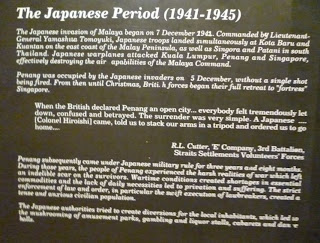The Japanese war means different things to different people. I was born 13 years after the war ended so I wouldn't feel much but reading helps me to understand. I understand it was an ugly war. Which war was pretty?
I watched TV documentaries of the Japanese capture and officers. I haven't read any Japanese accounts because I can't read Japanese text (my late mother lived by her Japanese books instead of her English books. My mother never had Malay books).
From my research on the early Malay doctors, only three Malay doctors served in the Japanese Military Administration. They were Dr Mustapha bin Osman, Dr Che Lah bin Md Joonos and Dr Haji Abbas bin Haji Alias. There maybe more doctors who served the Japanese.
From my research on the early Malay doctors, only three Malay doctors served in the Japanese Military Administration. They were Dr Mustapha bin Osman, Dr Che Lah bin Md Joonos and Dr Haji Abbas bin Haji Alias. There maybe more doctors who served the Japanese.
When I visited the Penang Museum in Georgetown, my husband said I must come and take a look at the Japanese documents and I did. I have never seen those Japanese documents before. They were travel documents, the same ones that Dr Abdul Wahab wrote about in his book which was published in 1987.
When I was there a team of Japanese tourists had arrived and I could hear them conversed in Japanese which I didn't understand. I wanted to ask them about the war but decided not to as I had no first hand experience of that otherwise painful war.
I once had a Japanese grandmother in Penang when I was growing up. She was old and almost bent double. She spoke Malay. [Please refer to my post on Ami Aziz.]
These photos below are from the Penang Museum display at the Japanese section and also from the Governors section.
The Japanese surrendered at City Hall in Singapore on 12 September 1945. Another signing ceremony was held at the Victoria Institution in Kuala Lumpur on 15 September 1945. Thus, there are 2 dates recorded for the Japanese surrender in Asia.







































0 comments:
Post a Comment